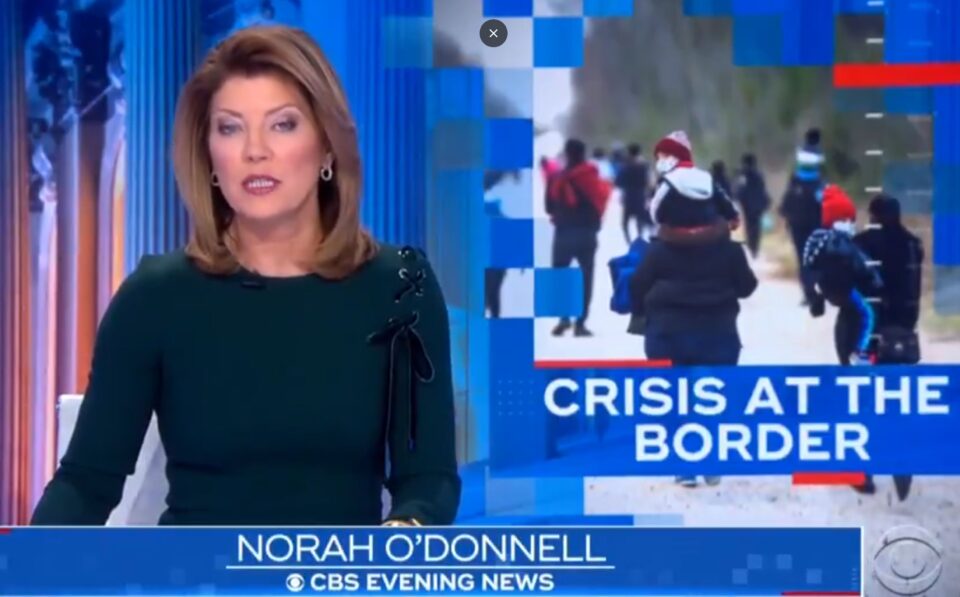‘Avoid Hyperbole,’ Including Use of ‘Surge’
Thank News Media for Ability to See Chauvin Trial
GM to Meet With Black Media Owners
Indian Country Today Leaders Become Its Owners
When Your Life Shapes Your Outlook on Diversity
. . . ‘Listen to the Origins of Our Pain, Anger, Grief’
Short Take
Support Journal-ismsNBC News Correspondent Gabe Gutierrez reports live from Carrizo Springs, Texas, on March 24 as he accompanies a delegation of White House officials and House Democrats who toured a Health and Human Services facility that houses hundreds of migrant children. (video)
‘Avoid Hyperbole,’ Including Use of ‘Surge’
The Associated Press has come down firmly against what it considers loaded the words “crisis” or “surge” in describing events at the United States-Mexico border. The wire service is not alone. Some journalists accuse their colleagues of parroting Republican talking points by using those terms.
John Daniszewski, vice president for standards, wrote Friday in an internal blog post, “The current event in the news — a sharp increase in the arrival of unaccompanied minors — is a problem for border officials, a political challenge for [President Joe] Biden and a dire situation for many migrants who make the journey, but it does not fit the classic dictionary definition of a crisis, which is: ‘A turning point in the course of anything; decisive or crucial time, stage, or event,’ OR ‘a time of, or a state of affairs involving, great danger or trouble, often one which threatens to result in unpleasant consequences [an economic crisis]. ‘
“Therefore, we should avoid, or at the least, be highly cautious, about referring to the present situation as a crisis on our own, although we may quote others using that language.
 “If using the word ‘crisis,’ we need to ask of what and to whom. There could be a humanitarian crisis if the numbers grow so large that officials cannot house the migrants safely or in sanitary conditions. Migrants may face humanitarian crises in their home countries. In theory, there could be a security or a border crisis if officials lose control of the border, allowing people to enter unencumbered in large numbers. But, in general, avoid hyperbole in calling anything a crisis or an emergency.”
“If using the word ‘crisis,’ we need to ask of what and to whom. There could be a humanitarian crisis if the numbers grow so large that officials cannot house the migrants safely or in sanitary conditions. Migrants may face humanitarian crises in their home countries. In theory, there could be a security or a border crisis if officials lose control of the border, allowing people to enter unencumbered in large numbers. But, in general, avoid hyperbole in calling anything a crisis or an emergency.”
An NPR/Marist poll released Tuesday found that just 34 percent of Americans approve of Biden’s handling of immigration, while 53 percent disapprove, even as Biden received high marks on handling COVID, and to a lesser extent, the economy. The survey did not measure the effect of media coverage.
Writing under the headline “Why the Media Wants a Crisis at the Border,” New Republic staff writer Alex Shephard saw a political motive behind the terminology.
Shephard wrote March 24, “All the crisis talk is telling. The Biden administration has been relatively drama-free in its first two months -— compared to the nonstop turbulence of its predecessor, it is downright serene. The situation at the border -— accompanied by any number of descriptors, typically ‘deteriorating’ or ‘chaotic’ —- injects some conflict, otherwise absent, into the picture.
“These poor migrants are less a humanitarian issue in these instances than a political one: All that really matters is that Republicans are criticizing Biden’s immigration stance. The Beltway press is back to doing what it does best: being a laundering mechanism for Republican talking points.”
On CNN’s “Reliable Sources” on Sunday, Washington Post columnist Greg Sargent pointed to Biden’s first news conference as president on Thursday.

A “number of the questions accepted the tacit right wing frame that a lot of migrants seeking asylum here is inherently a bad thing. Look, there are serious challenges at the border, but they are management ones,” Sargent said.
“The crisis is not the fact that people are seeking asylum, the crisis is what is happening in Central America, what is happening to the migrants themselves and our failure to adequately manage the effort by the people to seek — exercise their legal right to apply for asylum.
“In many discussions, all of that is just erased and all we get is you’re seeing a crisis at the border borne of large numbers of people trying to apply, and that ends up distorting the data and misinforming people.”
Tom K. Wong, Gabriel De Roche and Jesus Rojas Venzor crunched numbers Thursday in the Post. “What we’re seeing right now is a predictable seasonal shift,” they wrote. When the numbers drop again in June and July, policymakers may be tempted to claim that their deterrence policies succeeded. But that will just be the usual seasonal drop.
“What is more unusual at this moment is the increase in border crossings by unaccompanied minors, which appears to be more than just a seasonal pattern. This poses a more distinctive challenge for the Biden administration, although it is also possible that there will be a similar drop in crossings by minors during the summer months.
“So have Biden administration policies caused a crisis at the southern border?
“There is no evidence to suggest that this is the case. Organizations working with asylum seekers and unaccompanied children in the San Diego-Tijuana border region tell us that even before President Biden took office smugglers may have been exploiting potential clients by claiming it would be easier to enter the United States once the Trump administration was gone.
“This is supported by the literature that examines changes in the fees smugglers charge at the
U.S.-Mexico border, as well as a DHS report on the same subject. . . .”
Separately, Charles Kamasaki wrote Friday for the Brookings Institution, “Examining immigration policy through a systemic racism lens reveals that today’s largely Latino undocumented immigrants face far harsher consequences than white Europeans of years past for the same exact offense of unauthorized entry. A system that treats immigrants differently solely to their race is essentially the textbook definition of structural racism.”
- Julia Ainsley, NBC: Biden administration limits what Border Patrol can share with media about migrant surge at border (March 17)
- Priscilla Alvarez, CNN: Inside a closed-door US Border Patrol facility in Texas
- David Bauder, Associated Press: Explainer: Why is media access at the border an issue?
- Corrie Boudreaux, René Kladzyk and Robert Moore, El Paso Matters: Biden ends ‘Remain in Mexico,’ allowing thousands of migrants to stay in U.S. for asylum cases
- Jonathan Blitzer, New Yorker: Biden and the Blame Game at the Border
- Marcia Brown, American Prospect: Did CNN Air a Staged Migrant Crossing of the Rio Grande? (March 22)
- Caitlin Dickerson, the Atlantic: America’s Immigration Amnesia
- Sara Fischer and Neal Rothschild, Axios: Biden border crisis overtaking vaccine coverage (March 23)
- Todd J. Gillman, Dallas Morning News: As Abbott hits Biden for releasing migrants with COVID, White House asks why Texas rejects funds to test them (March 11)
- Julie Hollar, Fairness & Accuracy In Reporting: For Sunday Shows, Border Is ‘Political Crisis,’ Not Humanitarian Emergency
- Nick Miroff, Washington Post: Biden administration allows media inside Texas border tents packed with minors
- Nick Miroff and Maria Sacchetti, Washington Post: Migrant teens and children have challenged three administrations, but Biden faces rush with no precedent
- Elliot Spagat and Nomaan Merchant, Associated Press: Over 4,000 migrants, many kids, crowded into Texas facility
- Julio Ricardo Varela, Washington Post: Stop using ‘surge’ and ‘wave’ to describe what’s happening at the border
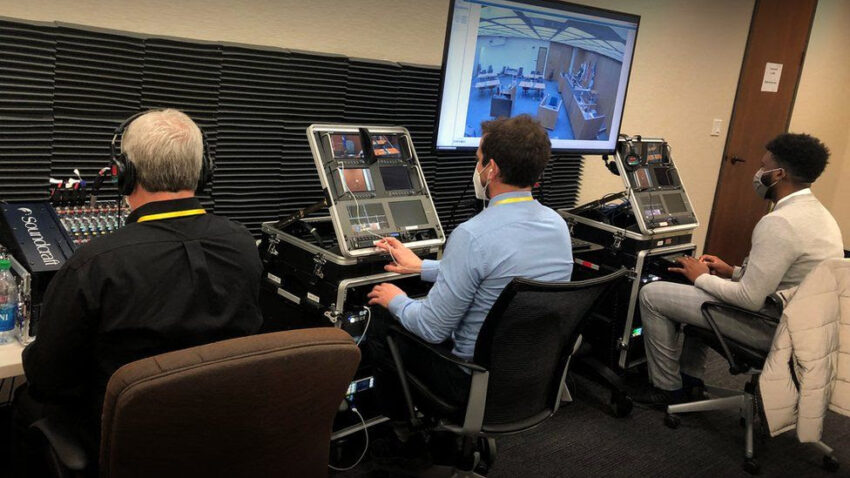
Thank News Media for Ability to See Chauvin Trial
If the video of George Floyd fatally pinned under Derek Chauvin’s knee for more than nine minutes set off emotions strong enough to prompt months of protests, then the televised trial for former officer Chauvin is sure to spark emotional reactions as well. And for that you can thank the news media.
Prosecutors wanted to limit trial access to closed-circuit TV viewable only in the courthouse, but a coalition of local and national media companies prevailed in petitioning Hennepin County, Minn., District Judge Peter Cahill to proceed with streaming the proceedings outside of the courthouse.
“Cahill issued an unprecedented order on Nov. 4 allowing camera access and livestreaming because the pandemic would allow little, if any room, for the public or media to observe from inside the trial courtroom,” as Chao Xiong reported Dec. 14 for the Star Tribune in Minneapolis.
“No court has ever faced the challenges this Court is facing and no court has ever tried to address those challenges as this Court proposes,” said the news media coalition’s memorandum. “Given the circumstances, the Court’s accommodation is what the Constitution requires.”
The coalition included the Star Tribune, Minnesota Public Radio, The Associated Press, all four local TV affiliates and their parent companies, The Wall Street Journal, The New York Times Company, Court TV, the Minnesota Coalition on Government Information and the Silha Center for the Study of Media Ethics and Law.
Xiong continued, “Attorneys for three of the four defendants in the case — former Minneapolis police officers Derek Chauvin, J. Alexander Kueng and Tou Thao — also filed memorandums Monday opposing the prosecution’s proposal.”
USA Today reported that the streaming benefited low-income people and those of color.
Not only are they most affected by police violence, but fewer “Black and Hispanic people have jobs that allow them to work from home, where it’s easy to keep a TV on in the background,” Tami Abdollah reported Monday.
” ‘We can’t trust this system; they need to be watched,’ said Leslie E. Redmond, former president of the Minneapolis NAACP.”
- Jon Allsop, Columbia Journalism Review: The trial of Derek Chauvin, and the debate about cameras in court
- Associated Press: Judge Warns Media At Derek Chauvin Trial Of Possible Removal (March 17)
- Robin Givhan, Washington Post: The witness would not be described as angry
- David P. Hutchinson, Star Tribune, Minneapolis: During trial, free speech, public safety will both be protected (March 6)
- Libor Jany, Star Tribune, Minneapolis: Social media seizes on ‘angry Black man’ exchange during Derek Chauvin trial
- Lee Moran, HuffPost: Don Lemon Uses On-Screen Clock To Make Powerful Point About George Floyd’s Death
- Joshua Nevett, BBC: Derek Chauvin trial: Why role of TV cameras could come into focus
- Rochelle Olson, Star Tribune, Minneapolis: Chauvin trial puts cameras front and center of the Hennepin County courtroom (March 19)
- Eugene Robinson, Washington Post: The world saw George Floyd’s final minutes. Now it will see whether he gets justice.
- USA Today Network: Tweets from Chauvin trial
GM to Meet With Black Media Owners
“General Motors CEO Mary Barra (pictured) will meet with Black-owned media leaders on Thursday, a GM spokesman said,” Jamie L. LaReau reported Tuesday for the Detroit Free Press.
 “The meeting follows an incendiary full-page ad that seven owners of Black-owned media companies placed in Sunday’s Detroit Free Press calling Barra racist for refusing to meet with them and allocate more of GM’s advertising dollars to the Black-owned media.” Another full-age ad appeared Wednesday in The Washington Post and reportedly was to run in the Wall Street Journal.
“The meeting follows an incendiary full-page ad that seven owners of Black-owned media companies placed in Sunday’s Detroit Free Press calling Barra racist for refusing to meet with them and allocate more of GM’s advertising dollars to the Black-owned media.” Another full-age ad appeared Wednesday in The Washington Post and reportedly was to run in the Wall Street Journal.
“GM has denied the racist accusation and took issue with some other statements in the ad,” LaReau continued.
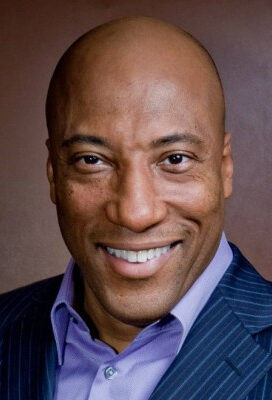 “But on Monday GM’s Chief Marketing Officer Deborah Wahl had a preliminary meeting with Byron Allen (pictured), the head of Allen Media Group which owns the Weather Channel, and several of the men who signed the full-page ad.
“But on Monday GM’s Chief Marketing Officer Deborah Wahl had a preliminary meeting with Byron Allen (pictured), the head of Allen Media Group which owns the Weather Channel, and several of the men who signed the full-page ad.
“That meeting was “constructive,” prompting the parties to set up a follow-up meeting with Barra for Thursday, said GM spokesman Pat Morrissey. . . .”
LaReau also wrote, “The ad was signed by the heads of seven Black-owned media companies including Allen, rapper and actor Ice Cube, who co-founded pro-basketball league BIG3, TV and film production company Cubevision, and Contract with Black America (CWBA), which he started with the goal of initiating dialogues about racism.
 “Also signing the ad is former NBA player Ulysses ‘Junior’ Bridgeman, who bought Ebony Media last year after bidding $14 million for it in U.S. Bankruptcy Court and Don Jackson, founder, chairman and CEO of Central City Productions, a Chicago-based television production company.”
“Also signing the ad is former NBA player Ulysses ‘Junior’ Bridgeman, who bought Ebony Media last year after bidding $14 million for it in U.S. Bankruptcy Court and Don Jackson, founder, chairman and CEO of Central City Productions, a Chicago-based television production company.”
In addition: Roland Martin (pictured above): CEO of Nu Vision Media, Inc., a Chicago-based company that produces and distributes Roland S. Martin’s daily digital show, #RolandMartinUnfiltered; Todd F. Brown, founder, Urban Edge Networks and HBCU League Pass, which covers historically Black colleges and universities; Earl “Butch” Graves Jr., president and CEO, Black Enterprise.
- Kalea Hall, Detroit News: Black executives call out Barra as GM pushes to be ‘most inclusive’ company
Indian Country Today Leaders Become Its Owners
“Indian Country Today has a new owner,” the publication announced on Friday.
“The National Congress of American Indians transferred ownership interests in Indian Country Today, LLC to IndiJ Public Media on March 26, 2021.
“The news enterprise was donated to NCAI by the Oneida Indian Nation in October 2017. Indian Country Today operated as an independent limited liability company owned by NCAI and will now operate as an independent company owned by IndiJ Public Media, an Arizona nonprofit corporation.
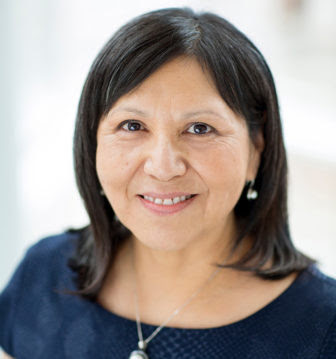 “ ‘This is a new day for ICT, which has a long history as a premier source of news for and about Indigenous communities, written and produced by Indigenous journalists,’ said Karen Lincoln Michel (pictured), Ho Chunk, president and CEO of IndiJ Public Media. ‘As IndiJ Public Media’s name implies, our focus remains on Indigenous journalism while emphasizing our expansion into broadcasting.’
“ ‘This is a new day for ICT, which has a long history as a premier source of news for and about Indigenous communities, written and produced by Indigenous journalists,’ said Karen Lincoln Michel (pictured), Ho Chunk, president and CEO of IndiJ Public Media. ‘As IndiJ Public Media’s name implies, our focus remains on Indigenous journalism while emphasizing our expansion into broadcasting.’
“IndiJ, a combination of the words ‘Indigenous’ and ‘journalism’ and pronounced in-Didge, was incorporated as a nonprofit corporation in Arizona in November 2020 and is awaiting approval of its 501(c)(3) application from the IRS. . . .
“In the past 40 years, Indian Country Today has evolved from the weekly The Lakota Times founded by Tim Giago, Lakota, in 1981; the newspaper was changed to the moniker it holds now in 1989. Then it went to a magazine and now an online daily digital news publication and daily national news broadcast. . . .”
- Tim Giago, indianz.com: Indian Country Today turns 40 this year (March 2)
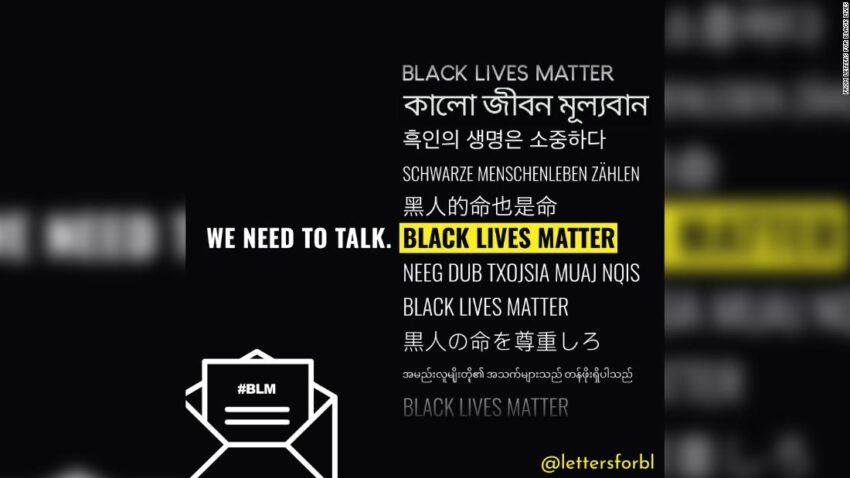
When Your Life Shapes Your Outlook on Diversity
Roxanne Jones, a CNN op-ed columnist and former editor at ESPN: The Magazine, uses her own biography to assess media diversity issues. So does Mei-Ling Hopgood, who teaches journalism at the Medill School of Journalism, Media, Integrated Marketing Communications at Northwestern University.
Their pieces come amid news that a significant amount of anti-Asian hate crime in New York has been perpetrated by African Americans and Hispanics, according to New York Police Department data analyzed by the Center for the Study of Hate and Extremism.
 Writing for CNN Friday, Jones (pictured), an African American, took readers to her childhood, when “Sung Hee and I were walking home from school together, trying to put on a brave face in front of our grade school tormentors.“
Writing for CNN Friday, Jones (pictured), an African American, took readers to her childhood, when “Sung Hee and I were walking home from school together, trying to put on a brave face in front of our grade school tormentors.“
Standing together, “facing the hate in front of us, Sung Hee and I felt safer. We felt braver.”
Onward to the case of 27-year-old Alexi McCammond, also African American, who had to step down from her new post as editor-in-chief of Teen Vogue magazine “once a slew of mocking anti-Asian and homophobic comments she made nearly 10 years ago were once again brought to public attention. Her departure was necessary, but it isn’t the end of her story . . .,” Jones writes.
“I’m not here to judge McCammond. I’m not here to cancel her, either. But I do think it’s fair for her to be held accountable despite the time that has passed since her comments. And her departure is the embodiment of an accountability that feels right and that, thankfully, we are seeing more often these days. For me, her bigotry, whether intended or not, calls into question her ability to lead a newsroom in today’s more racially conscious climate. I made multiple efforts to reach McCammond but I did not hear from her. . . .
“McCammond is a talented journalist. She established herself as a savvy political reporter while she covered President Joe Biden’s campaign. I’m rooting for her and hope she will find a way to heal the wounds her past comments have caused, intentionally, or not. If she can put in the hard work to regain the trust of the audiences she offended, she can continue her success.
“But McCammond isn’t the story anymore — what happens next is what matters most. Now is a perfect opportunity for groups like the National Association of Black Journalists, which named McCammond the emerging journalist of the year in 2019, and the Asian American Journalists Association, which stood by her hire but asked for more equitable treatment of Asian employees, to deepen their partnership and more aggressively challenge the structural racism throughout media. . . .
“As Sung Hee and I discovered on those long walks home, standing together, facing the hate in front of us, we are safer. And we are stronger.”
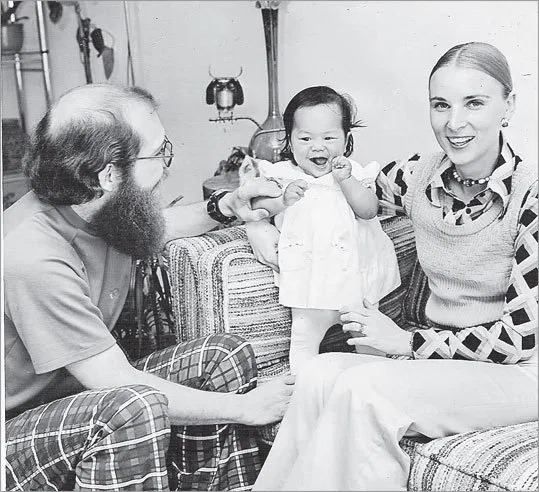
. . . ‘Listen to the Origins of Our Pain, Anger, Grief’
Mei-Ling Hopgood won the Barry Bingham Sr. Fellowship from the News Leaders Association last year, given to an educator who has done the most to promote diversity.
“I was raised in suburban Detroit, the adopted Chinese child of two white parents,” Hopgood wrote March 22 for National Geographic. “Taylor, Michigan, was a blue-collar, union town. The population was mostly white. I used to joke that my Korean brothers and I made up a hearty portion of the less than 1 percent that was Asian.”
Like many others, Hopgood had conflicts between wanting to fit in with her peers and having to deal with racist microagressions.
At college, “I found my own voice with support of communities of color. As a radicalized college student, I became strident in response to the wounds of the past. When I visited home, I argued with people from high school about their anti-Asian or anti-Black views. Once, I heard a group of kids say ‘Ah-so!’ behind me, while my family and I were buying popcorn at a movie theater.
“ ‘You think you are more American because you are white?!’ I screamed and swore at the kids, who cowered. The crowd lobby seemed to stop moving. I stood before them, smoldering. . . .”
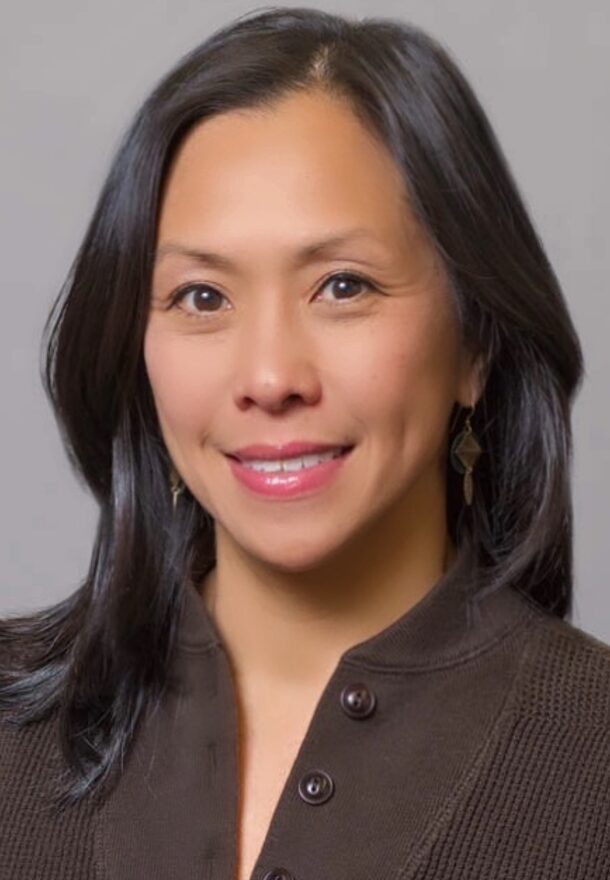 Hopgood (pictured) later writes, “This winter, I taught a journalism class called Covering Asian American Stories. Most of the students enrolled identify as Asian and Asian American or people of color. Together, we could look at the events today in historical context: the Chinese Exclusion Act, the internment of the Japanese during World War II, Vincent Chin’s murder. We confronted exclusion, harassment, and violence committed against Asians — and perpetrated by Asians.
Hopgood (pictured) later writes, “This winter, I taught a journalism class called Covering Asian American Stories. Most of the students enrolled identify as Asian and Asian American or people of color. Together, we could look at the events today in historical context: the Chinese Exclusion Act, the internment of the Japanese during World War II, Vincent Chin’s murder. We confronted exclusion, harassment, and violence committed against Asians — and perpetrated by Asians.
“We talked about the model minority myth, the sexualization of Asian women, and de-sexualization of Asian men. Accomplished journalists such as civil rights leader Helen Zia, a key activist in the Chin case, shared their experiences. . . .”
Hopgood said she is still trying to make sense of the March 16 killings of six Asian women who worked in three Atlanta massage parlors. But she concludes, “I go back to the advice that I’ve given in classes as we discussed what feels like an endless march of traumatic events. If we can listen to the origins of our deepest pain, anger, and grief, we can understand the values that are worth fighting for. The reflection, growth, and hard work has to continue. I do see more Asian American journalists, activists, and their allies speaking out.
“My hope is that my students will be among them one day. This nation must see that the stories of Asian Americans are an important part of the collective narrative of racial experience in the U.S. And the reckoning must include their voices.”
- Sofia Cerda Campero, Nieman Reports: Get to Know the Newsrooms Focused on Elevating Latinx Voices in the U.S.
- Angie Chuang, The Conversation: Two stereotypes that diminish the humanity of the Atlanta shooting victims – and all Asian Americans
- Michael Eric Dyson, Washington Post: Why don’t we treat Asian American history the way we treat Black history?
- Rod Hicks, the Quill, Diversifying newsrooms requires buy-in and commitment to goals
- Hufsa Kamal (Fox News producer for “Special Report with Bret Baier“), YouTube: On Mohammad Anwar, Hate Crimes Against Asian-Americans, Jeanine Pirro (video)
- Cynthina Adina Kirwood blog, Go West, Black Woman
- Richard Lui, NBC Think: My Asian American awakening echoes America’s. Now it’s time for an AAPI movement.
- Maria Martinolich, Kamini Ramdeen, Niven McCall-Mazza, The Skimm: History of Anti-Asian Racism in the United States
- Melba Newsome, Reynolds Journalism Institute: 10 Steps to More Inclusive Reporting [PDF]
- Gabe Schneider, Reynolds Journalism Institute: Editorial boards that look nothing like their cities shouldn’t speak for them
Short Take
Support Journal-ismsA year later. I get tired of talking about this video. But it’s a reminder of my journey. I couldn’t get a job on TV because of my hood/Baltimore accent. I spent thousands on a speech coach. Fast forward, this week I learned I won an award from the Iowa Broadcast News Association https://t.co/4L8JP6cOAy
— Deion Broxton (@DeionBroxton) March 25, 2021
To subscribe at no cost, please send an email to journal-isms+subscribe@groups.io and say who you are.
Facebook users: “Like” “Richard Prince’s Journal-isms” on Facebook.
Follow Richard Prince on Twitter @princeeditor
Richard Prince’s Journal-isms originates from Washington. It began in print before most of us knew what the internet was, and it would like to be referred to as a “column.” Any views expressed in the column are those of the person or organization quoted and not those of any other entity. Send tips, comments and concerns to Richard Prince at journal-isms+owner@
View previous columns (after Feb. 13, 2016).
View previous columns (before Feb. 13, 2016)
- Diversity’s Greatest Hits, 2018 (Jan. 4, 2019)
- Book Notes: Is Taking a Knee Really All That? (Dec. 20, 2018)
- Book Notes: Challenging ’45’ and Proudly Telling the Story (Dec. 18, 2018)
- Book Notes: Get Down With the Legends! (Dec. 11, 2018)
- Journalist Richard Prince w/Joe Madison (Sirius XM, April 18, 2018) (podcast)
- Richard Prince (journalist) (Wikipedia entry)
- February 2018 Podcast: Richard “Dick” Prince on the need for newsroom diversity (Gabriel Greschler, Student Press Law Center, Feb. 26, 2018)
- Diversity’s Greatest Hits, 2017 — Where Will They Take Us in the Year Ahead?
- Book Notes: Best Sellers, Uncovered Treasures, Overlooked History (Dec. 19, 2017)
- An advocate for diversity in the media is still pressing for representation, (Courtland Milloy, Washington Post, Nov. 28, 2017)
- Morgan Global Journalism Review: Journal-isms Journeys On (Aug. 31, 2017)
- Diversity’s Greatest Hits, 2016
- Book Notes: 16 Writers Dish About ‘Chelle,’ the First Lady
- Book Notes: From Coretta to Barack, and in Search of the Godfather
- Journal-isms’ Richard Prince Wants Your Ideas (FishbowlDC, Feb. 26, 2016)
- “JOURNAL-ISMS” IS LATEST TO BEAR BRUNT OF INDUSTRY’S ECONOMIC WOES (Feb. 19, 2016)
- Richard Prince with Charlayne Hunter-Gault,“PBS NewsHour,” “What stagnant diversity means for America’s newsrooms” (Dec. 15, 2015)
- Book Notes: Journalists Follow Their Passions
- Book Notes: Journalists Who Rocked Their World
- Book Notes: Hands Up! Read This!
- Book Notes: New Cosby Bio Looks Like a Best-Seller
- Journo-diversity advocate turns attention to Ezra Klein project (Erik Wemple, Washington Post, March 5, 2014)
(more to come)

